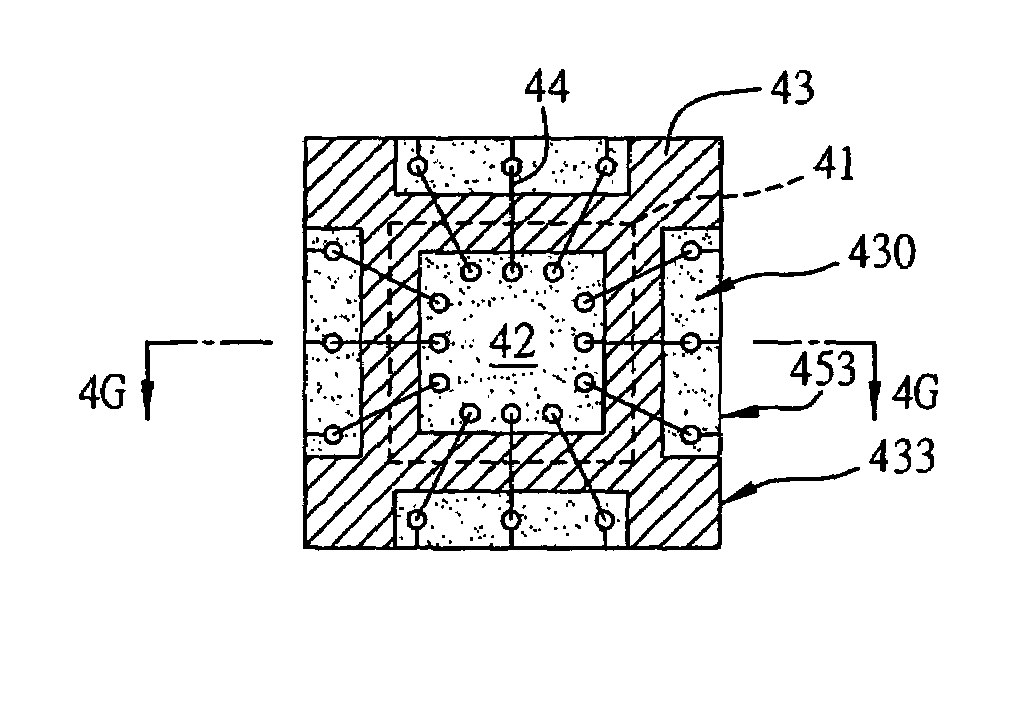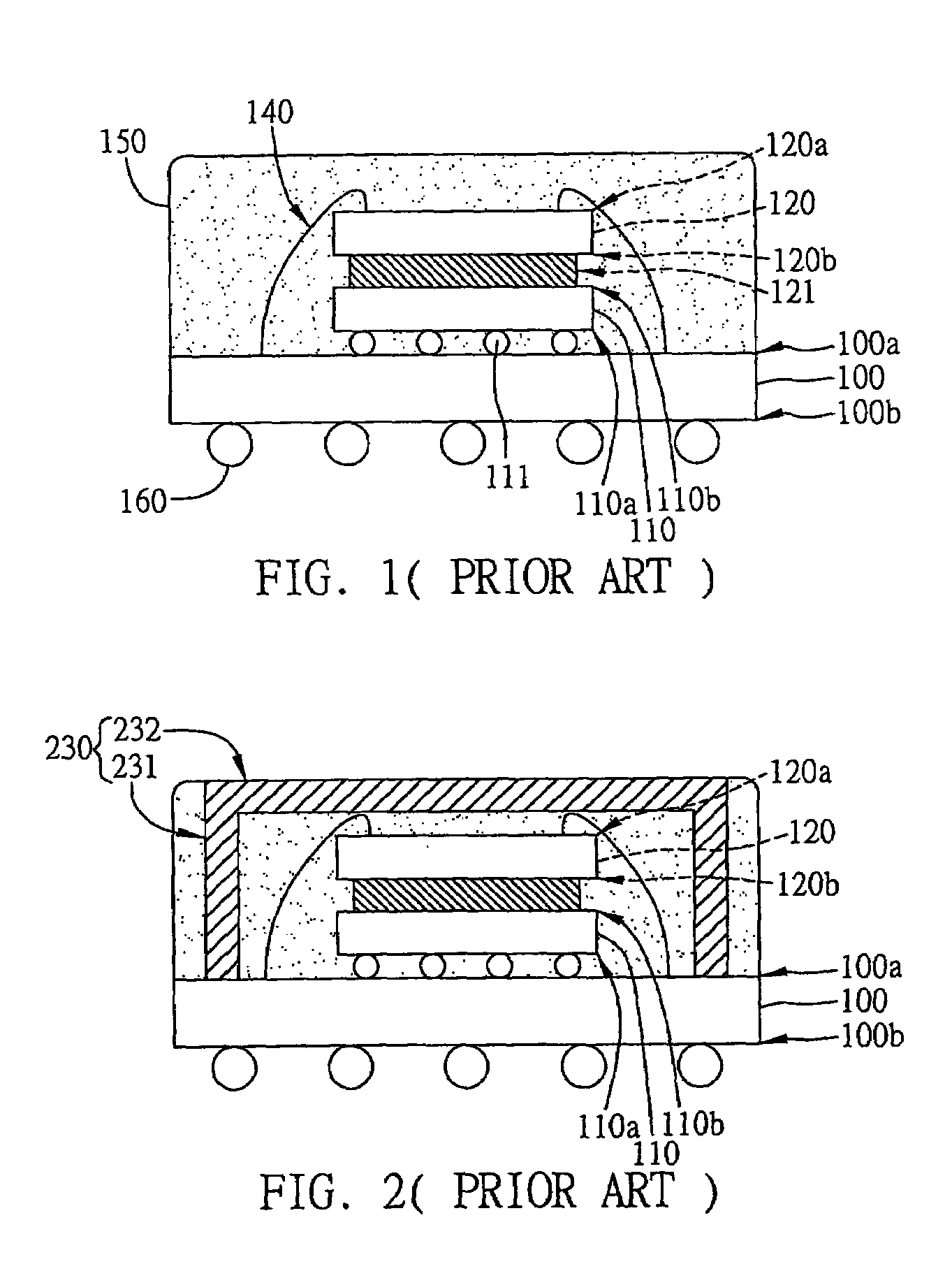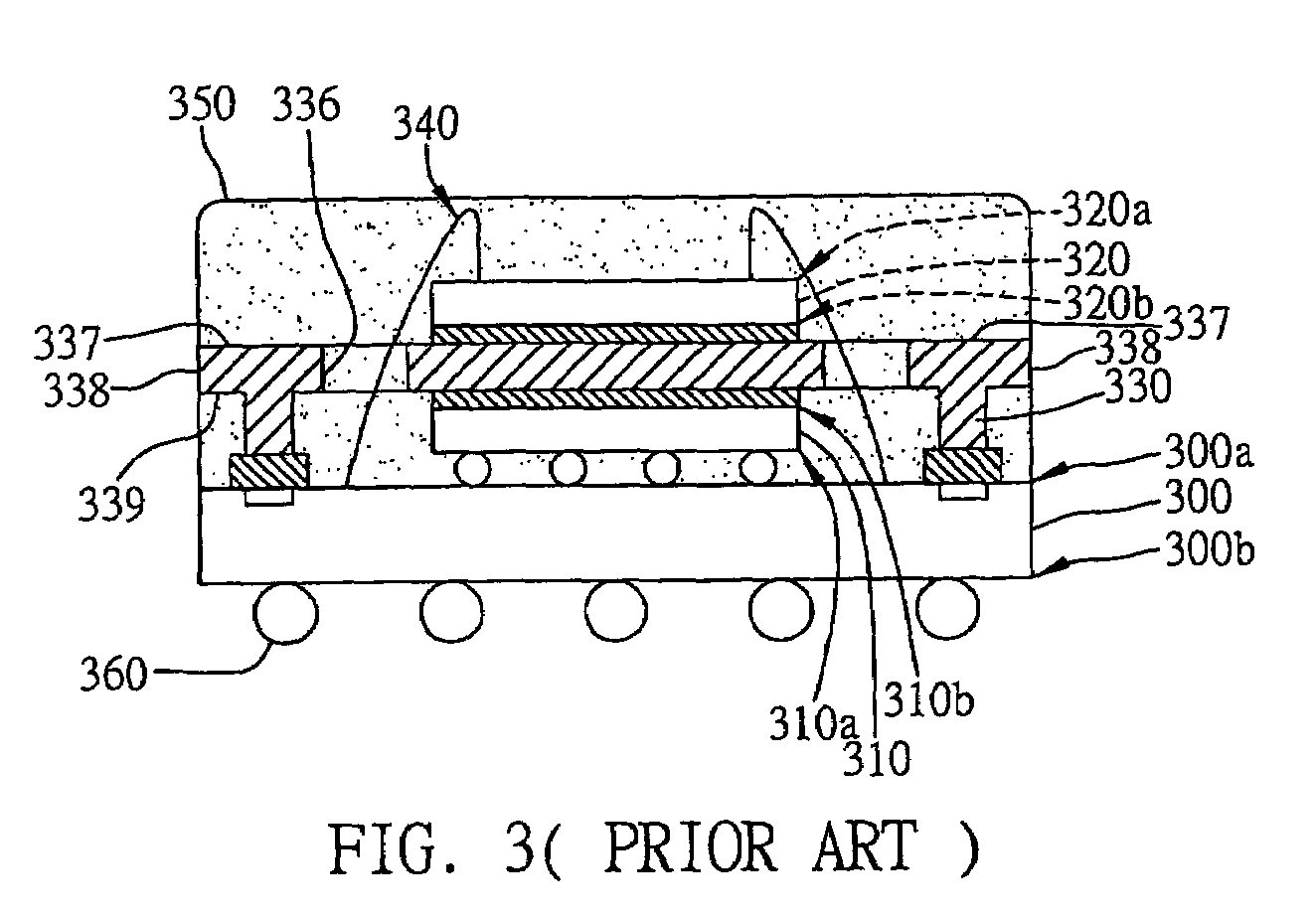Chip-stacked semiconductor package and method for fabricating the same
a technology of semiconductor packages and chips, applied in semiconductor devices, semiconductor/solid-state device details, electrical devices, etc., can solve the problems of poor thermal conductivity, affecting the performance and lifetime of chips, and affecting the heat dissipation efficiency of chips, so as to facilitate the mass production of semiconductor packages and avoid excessive wear of cutting tools
- Summary
- Abstract
- Description
- Claims
- Application Information
AI Technical Summary
Benefits of technology
Problems solved by technology
Method used
Image
Examples
first embodiment
[0035]FIGS. 4A to 4H show steps of a method for fabricating chip-stacked semiconductor packages according to a first embodiment of the present invention.
[0036]Referring to FIGS. 4A and 4B, firstly, a chip carrier module plate such as a substrate module plate 40A is provided, which includes a plurality of chip carriers such as substrates 40 arranged in an array. Each of the substrates 40 has a first surface 401 and a second surface 402 opposed to the first surface 401. A plurality of first bond pads 403 and second bond pads 404 are formed on the first surface 401 of each of the substrates 40. The first bond pads 403 are located at a central portion of the first surface 401 of each of the substrates 40, such that a first chip 41 is attached and electrically connected to the first bond pads 403 of each of the substrates 40 in a flip-chip manner. The second bond pads 404 are located at a peripheral portion of the first surface 401 of each of the substrates 40 to subsequently allow a sec...
second embodiment
[0044]FIG. 6 is a cross-sectional view of a semiconductor package according to a second embodiment of the present invention. The semiconductor package in the second embodiment is fabricated by a method similar to that for the semiconductor package in the first embodiment, with a difference in that in the second embodiment, during a wire-bonding process for a second chip 52, a heat sink 53 serves as a ground plane such that the second chip 52 is electrically connected to the heat sink 53 via grounding wires 540 to thereby improve the electrical performance of the semiconductor package. In order for the heat sink 53 to provide electrical connection with the grounding wires (such as gold wires), silver is plated at positions on the heat sink 53 for connecting the grounding wires so as to improve the bondability between the heat sink 53 and the grounding wires.
third embodiment
[0045]FIG. 7 is a cross-sectional view of a semiconductor package according to a third embodiment of the present invention. The semiconductor package in the third embodiment is fabricated by a method similar to that for the semiconductor package in the first embodiment, with a difference in that a chip carrier used in the third embodiment is a LGA (Land Grid Array) substrate 60, such that a first chip 61 and a second chip 62 can be electrically connected to an external device through a plurality of metal contacts 60a provided on a bottom surface of the LGA substrate 60.
PUM
 Login to View More
Login to View More Abstract
Description
Claims
Application Information
 Login to View More
Login to View More - R&D
- Intellectual Property
- Life Sciences
- Materials
- Tech Scout
- Unparalleled Data Quality
- Higher Quality Content
- 60% Fewer Hallucinations
Browse by: Latest US Patents, China's latest patents, Technical Efficacy Thesaurus, Application Domain, Technology Topic, Popular Technical Reports.
© 2025 PatSnap. All rights reserved.Legal|Privacy policy|Modern Slavery Act Transparency Statement|Sitemap|About US| Contact US: help@patsnap.com



